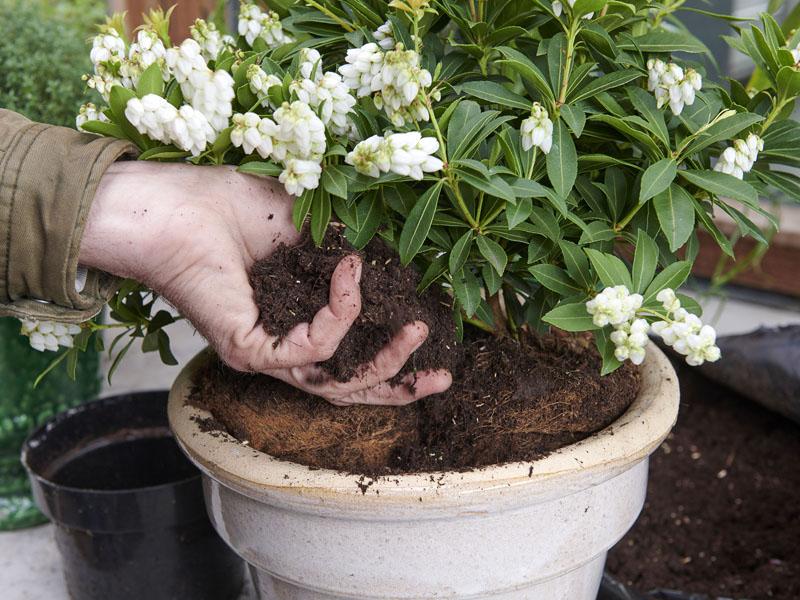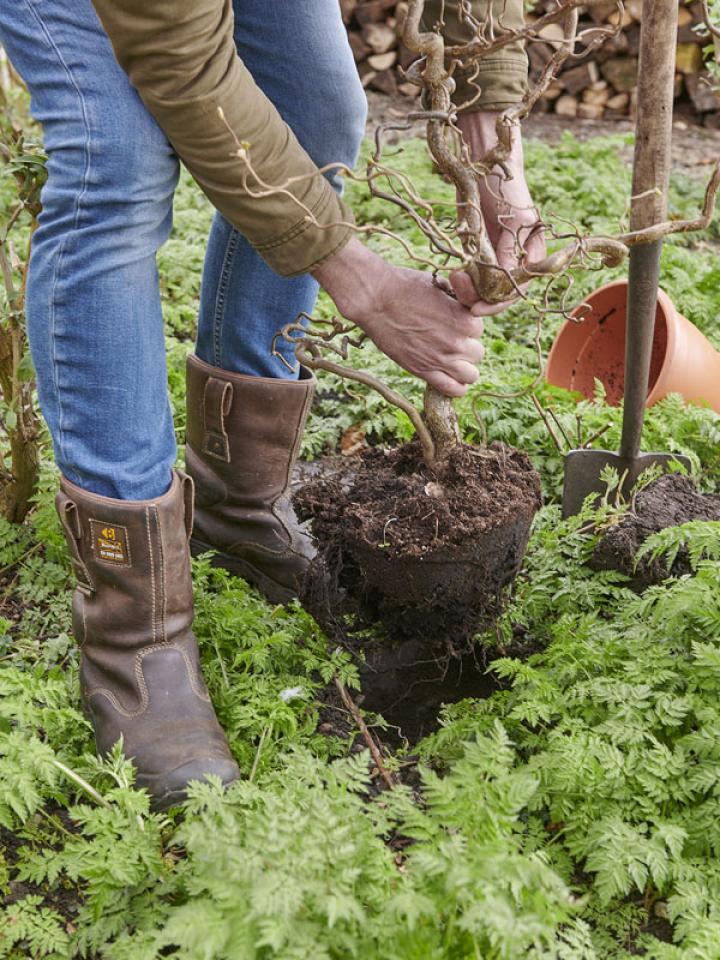what TO CONSIDER BEFORE PLANTING GARDEN PLANTS
Planning to plant garden plants? You should absolutely choose plants that you like, but don't forget to consider the following:
- The location of your outdoor space: do you have a shady north-facing garden or a sunny, sheltered south-facing balcony? Consider the location of your garden or balcony when choosing your garden plants. Based on this, choose sun-loving plants or shade-seekers. This is usually indicated on the plant label or you can ask employees at your local a garden centre or nursery.
- The soil conditions: are you dealing with sandy soil, sea clay or lime-free clay? Check this map for a genera, overview of different soil types in the UK. If you are unsure which plants are best suited to your soil type, don't hesitate to ask a gardening expert for help.
- Your personal style: do you prefer a tropical atmosphere, do you want a garden full of edible plants or do you prefer a more city-forward style? Get inspired by these four urban gardens.
- Different flowering times: choose garden plants that flower at different times. This way, you can create an attractive garden all year round. Take a look at these ready-made plans for garden borders for inspiration.
- Companion planting: if you want to take your outdoor space to an even higher level, consider companion planting by making strategic plant choices.
what's the best time to plant garden plants?
In principle, plants grown in pots can be planted all year round (except when it freezes), but for almost all garden plants, autumn is the best time to plant them. Here, we explain exactly why.
The temperature in autumn is milder than in summer or winter. Moreover, in autumn there is no chance of severe frost, as the soil is still sufficiently warm from the summer and there is enough rain (more so than in spring), so the soil is sufficiently moist. This gives garden plants the best chance to take root before being exposed to extreme weather conditions, such as cold.
While autumn is the preferred time to plant garden plants, autumn is not the best season to plant every plant! The garden plants listed below are better planted into the ground in spring:
- Frost-prone plants: frost-prone and/or subtropical plants such as the eucalyptus, Agapanthus and olive tree, prefer to be planted after the risk of frost has disappeared, in spring.
- Potted plant plants: non winter-hardy and tropical/exotic plants (such as Bougainvillea and Mandevilla) cannot stand the cold. Therefore you should preferably plant them any time onwards from when the chance of nighttime frosts have passed.
- Annual plants: annual flowering plants such as cosmos, poppies, cornflowers and sunflowers are perfect for adding colour to your garden in summer. Plant them, depending on the variety (and degree of winter hardiness) between March and May.
- Summer flowering bulb plants plants: summer-blooming bulbs such as dahlias and cannas are not frost-resistant and should be planted when the risk of frost has passed, from late spring to early summer.
GARDEN PLANTING SUPPLIES
For planting garden plants, you don't need many gardening tools. However, it's smart to invest in a few basic supplies:
- Shovel/spade (to dig holes)
- Garden fork (to further loosen the garden soil and mix it with planting soil)
- Gardening gloves
- Watering can
- Suitable, organic soil improver (planting compost). The type you need will depend on your garden's native soil type and the kind of plants you're growing. Some plants require specific soil requirements, for example acid-loving plants such as Rhodondendron and hydrangea.
here's how to plant outdoors in the ground
Planting a plant, tree or shrub in the open ground isn't difficult, but it's important to follow the right steps. Check out our step-by-step plan below* for planting garden plants, shrubs or trees.
- Choose a suitable spot for your plant and dig a hole about twice as deep as the plant's root ball.
- Loosen the ground soil and mix the area where you're going to put the plant in with compost or other soil, to improve the quality.
- Place the plant in the middle of the hole, on top of the fertile soil.
- Fill in the hole around the new plant with a mixture of garden soil and compost. Make sure that the top of the root ball is level with the soil. Bear in mind that the loose soil around the plant will sag slightly. Do not set the plant too high, as this will cause the root ball to stick out above the soil and dry out.
- Press the soil around the plant firmly (you can do this with your feet if the plant is large).
- Give the plant a good amount of water. Is it a dry and sunny period? Then give the plant enough water for the first few days.
*Are you planting a plant from a pot and is the root ball dry? Submerge it in water first, loosen the roots a little, and place the plant in the planting hole.

How to plant potted plants
Any outdoor space is greatly enhanced by pots and containers full of plants. While it may be tempting to leave your brand new plants in their garden centre-provided pots when you bring them home, this isn't actually a good idea. To enjoy your plants as long as possible, repot them into a larger pot.
There are specific things to keep in mind when caring for potted plants, such as the fact that plants in pots dry out much faster than plants in the open ground due to sun and wind. Check out the step-by-step plan for planting and repotting plants in pots below.
- Choose a suitable plant pot (see the tips below).
- Put a layer of potting soil on the bottom of the pot. This provides a good base for the plant to take root.
- Remove the plant from its current, temporary pot. If necessary, gently tap the bottom to loosen the pot from the root ball. Tip: Have the roots already grown through the holes in the pot and you can't get the plant out? Then cut open the pot and don't destroy the roots.
- Is the root ball dry? Then immerse it in water.
- Place the plant in the middle of the new pot. Is the layer of potting soil (from step 2) high enough, or do you need to add some more? Make sure the top of the root ball is about two-three centimetres below the rim of the pot.
- Fill the rest of the pot with compost. Press the soil down gently but firml,y so that the roots make good contact with the new earth.
- Give the plant a generous amount of water.
- Place the pot in the suitable location, corresponding to the plant's needs (sun or shade? sheltered or not?).
- Water regularly right after repotting (especially during dry days), and continue to do so regularly. Check the soil to feel if the plant's soil is moist or not.
which pot should you choose?
Looking for a suitable pot to plant your garden plant in? Then take a look at the tips below:
- Choose a pot that's large enough for the plant you want to plant. Provide enough space for growing roots.
- Ensure good drainage in the pot. Choose a pot with drainage holes at the bottom so that excess water can drain away.
- Consider the material of your pot (plastic, ceramic, wood or terracotta). Each material has advantages and disadvantages. A terracotta pot breathes well, but this can make a plant dry out faster. A plastic pot holds moisture better but is lighter, so it may not stand as firmly in strong winds.
more green inspiration
Looking for more inspiration and tips to green up your space? Get inspired by these early-flowering garden plants or discover how to turn a grey wall into a green eyecatcher with these seven evergreen climbing plants.





